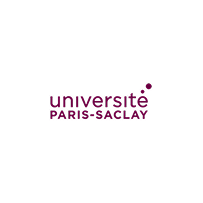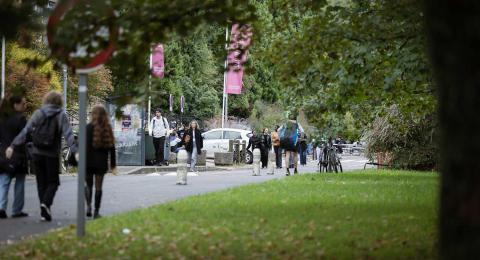Le Master Smart Aerospace and Autonomous Systems forme des experts capables de concevoir, modéliser et contrôler des véhicules intelligents et systèmes autonomes. Ce programme unique allie rigueur scientifique, intelligence artificielle et technologies embarquées pour répondre aux défis industriels et sociétaux de demain.
Former des professionnels ou chercheurs capables de travailler sur des drones, des véhicules autonomes ou des flottes robotiques coopératives, en maîtrisant à la fois les aspects théoriques et pratiques.
Organisation générale
Le programme comporte des cours magistraux, travaux dirigés, travaux pratiques et projets tutorés, offrant un équilibre entre connaissances fondamentales et compétences techniques opérationnelles. Le 2ème semestre du Master est consacrés au stage de 6 mois.
Informations
Compétences
- Modéliser, simuler et contrôler des systèmes autonomes en garantissant stabilité, robustesse et manœuvrabilité.
- Planifier, coordonner des missions et intégrer l’intelligence artificielle pour la perception, la décision et l’autonomie des véhicules intelligents.
Objectifs pédagogiques de la formation
L’essor des systèmes autonomes et des véhicules intelligents a connu une croissance spectaculaire au cours de la dernière décennie, aussi bien dans la recherche que dans l’industrie. Aujourd’hui, ces technologies s’imposent dans des domaines variés : drones pour la surveillance et l’agriculture, la photographie aérienne, les véhicules autonomes, les robots de service, ou encore l’exploration maritime et spatiale. Ce développement rapide rend indispensable une formation spécialisée, capable de doter étudiants et futurs ingénieurs et chercheurs des connaissances nécessaires pour concevoir, analyser et contrôler ces systèmes complexes.
Le Master Smart Aerospace and Autonomous Systems répond à ce besoin en offrant un cursus unique qui rassemble, aussi bien les outils théoriques et pratiques essentiels à la maîtrise des systèmes autonomes. Ce cursus intègre directement les avancées récentes en contrôle, intelligence artificielle et technologies embarquées appliquées aux véhicules intelligents.
Dans ce cadre, les étudiants développent des compétences solides en contrôle, commande, afin d’assurer la stabilité et la manœuvrabilité des véhicules intelligents. Ils acquièrent également une expertise en modélisation et simulation, indispensable pour concevoir et valider des systèmes robustes. La formation met un accent particulier sur la planification de trajectoire et l’intelligence artificielle, permettant de doter les systèmes d’une véritable autonomie décisionnelle. L’intégration et la fusion de capteurs leur offrent ensuite la capacité de percevoir l’environnement de manière fiable et précise. Enfin, la coordination multi-systèmes permet la gestion collaborative de flottes de drones, de véhicules autonomes ou d’autres systèmes intelligents.
L’aérospatial et aéronautique représentent des domaines d’application phares, mais les compétences acquises dépassent largement ce secteur et s’étendent à la mobilité intelligente, la logistique, la sécurité ou encore la robotique de service.
En combinant vision interdisciplinaire, rigueur scientifique et applications concrètes, ce master offre aux étudiants et aux ingénieurs une opportunité unique de devenir des acteurs majeurs de l’innovation dans le domaine des systèmes autonomes et des véhicules intelligents.
Débouchés
Professionnels
Après Master + Doctorat : chercheur ou enseignant-chercheur
Après un Master ou Master + Doctorat : chercheur ou enseignant-chercheur
Après un Master ou Master + Doctorat : ingénieur (recherche et développement, contrôle, production…)
Ingénieur de recherche ou d'études
Poursuite d’études
Chercheur/chercheuse en R&D ou expert·e en modélisation et analyse de données dans des entreprises ou laboratoires de pointe.
Doctorat
ngénierie études, recherche et développement
Tarifs et bourses
Les montants peuvent varier selon les formations et votre situation.
Voie d’accès
Capacité d’accueil
Places
Public visé et prérequis
Public visé
- Étudiants titulaires d’un diplôme de niveau Master 1, Bachelor (ou équivalent) souhaitant se spécialiser dans les systèmes autonomes et intelligents.
- Ingénieurs en activité ou jeunes diplômés désirant développer des compétences avancées en commande, modélisation, intelligence artificielle et technologies embarquées.
Prérequis
- Qualification en aéronautique, génie électrique, informatique/Computer Science Engineering, systèmes embarqués et systèmes dynamiques, ou génie mécanique.
- Solides bases en mathématiques appliquées, automatique et programmation.
- Bonne maîtrise de l’anglais technique et scientifique (cours dispensés en anglais).
Période(s) de candidature
Du 02/02/2026 au 05/07/2026
Pièces justificatives
Obligatoires
Classement Année Précedente et taille promotion.
Copie diplômes.
Copie pièce d'identité.
Lettre de motivation.
Tous les relevés de notes des années/semestres validés depuis le BAC à la date de la candidature.
Curriculum Vitae.
Attestation de niveau d'anglais (obligatoire pour les non anglophones) ou Résultats test GMAT/GRE.
Facultatives
Descriptif détaillé et volume horaire des enseignements suivis depuis le début du cursus universitaire.
Dossier VAPP (obligatoire pour toutes les personnes demandant une validation des acquis pour accéder à la formation) https://www.universite-paris-saclay.fr/formation/formation-continue/validation-des-acquis-de-lexperience.
Fiche de choix de M2 (obligatoire pour les candidats inscrits en M1 à l'Université Paris-Saclay) à télécharger sur https://urlz.fr/i3Lo.
Document justificatif des candidats exilés ayant un statut de réfugié, protection subsidiaire ou protection temporaire en France ou à l’étranger (facultatif mais recommandé, un seul document à fournir) :
- Carte de séjour mention réfugié du pays du premier asile
- OU récépissé mention réfugié du pays du premier asile
- OU document du Haut Commissariat des Nations unies pour les réfugiés reconnaissant le statut de réfugié
- OU récépissé mention réfugié délivré en France
- OU carte de séjour avec mention réfugié délivré en France
- OU document faisant état du statut de bénéficiaire de la protection subsidiaire en France ou à l’étranger.









